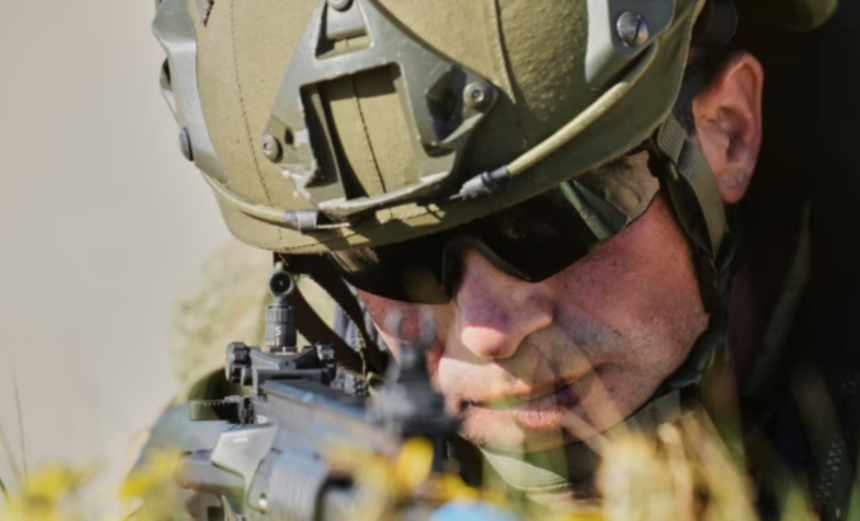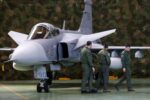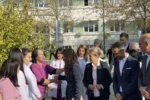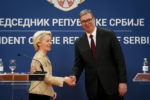A month after UK Prime Minister Keir Starmer announced the creation of a “coalition of the willing” to establish a military mission in Ukraine, many questions remain unanswered.
Starmer said the plan would include “British troops on the ground and aircraft in the air, alongside others,” but so far, details about who will contribute and how remain scarce.
Who Could Send Troops to Ukraine?
To date, France is the only country that has made a clear commitment to sending military forces to Ukraine as part of the mission.
The London conference and subsequent meetings have involved more than 30 countries. Some are expected to support the mission from outside Ukrainian territory. For instance, Germany expressed willingness to send troops under a UN mandate — a move likely blocked by Russia’s veto — meaning Berlin’s contribution would likely be logistical support.
Ukrainian President Volodymyr Zelensky met outgoing German Foreign Minister Annalena Baerbock in Kyiv on April 1, stating that a “core group of countries” is ready to deploy contingents.
Sweden’s Prime Minister Ulf Kristersson said he was “willing to help… under certain conditions,” while Denmark’s Foreign Minister Lars Lokke Rasmussen noted Denmark is “in principle” prepared.
Australian Prime Minister Anthony Albanese said his country might contribute “a small force,” although he faces elections in May. Belgium described its participation as “logical.”
However, some nations have ruled out sending troops. Poland, citing security concerns over Russia and Belarus, and Greece have both declined involvement. Turkey — a major military power with significant air and naval capabilities — has not yet issued a clear statement.
What Would Western Troops Do in Ukraine?
Although often called a peacekeeping mission, the term does not accurately describe the plan.
“If we call it a ‘peacekeeping mission,’ that usually implies a UN-backed mission requiring consent from both sides,” a NATO diplomat told RFE/RL’s Ukrainian Service. “A ‘security mission’ does not need Russian approval.”
The goal is to ensure that once a ceasefire or peace agreement is reached, forces would be deployed to reassure Ukraine that Russia will not resume its aggression.
“If there were a renewed general attack against Ukrainian territory, these troops would be under fire, and we would act according to our usual engagement protocols,” said French President Emmanuel Macron during a summit on March 27.
Macron clarified that Western forces would be stationed at “strategic locations,” not directly on the front lines. Both Starmer and Zelensky emphasized that forces would cover Ukraine’s air, naval, and land spaces.
Military planners have been developing various deployment scenarios, but NATO diplomats admit that the final vision will depend heavily on how circumstances evolve.
Russian Opposition
Russia has consistently opposed the deployment of foreign troops to Ukraine, especially those from NATO countries, effectively ruling out a UN-mandated mission.
However, European countries have indicated they are willing to proceed without Russia’s consent. Macron recently reaffirmed this in an interview with French regional newspapers:
“If Ukraine requests allied forces on its territory, it is not up to Russia to accept or refuse.”
Nevertheless, even without direct Russian interference, the mission faces another hurdle.
U.S. Support: A Key Missing Piece
From the start, the plan has relied heavily on what Starmer called the “U.S. backstop” — meaning American support in the form of air cover, logistics, and intelligence sharing.
So far, Washington has not given a clear signal of readiness to back the operation.
Instead, Steve Witkoff, a close aide to former U.S. President Donald Trump and a key figure in mediation efforts between Russia and Ukraine, dismissed the coalition idea as mere “posturing.”
A diplomat from a NATO member state told RFE/RL that overcoming the lack of U.S. engagement is crucial:
“We need to present a clear proposal to the United States. We must avoid demonstrating complete dependency on American presence. Respect must be shown for…”







